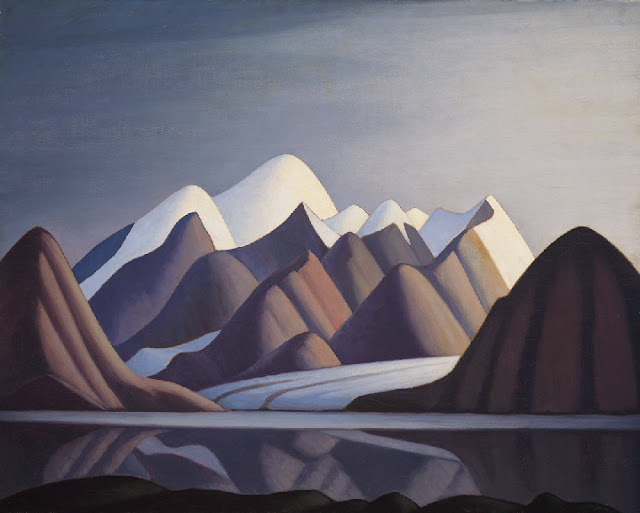CHARLES HAMILTON SMITH (1776-1859)
Crimson Cliffs (300 m- 984 ft)
Danemark- Greenland
In Red Snow along cliffs in Greenland - Watercolour from Views of Polar region, Yale Center for British arts- Connectitcut, USA
Crimson Cliffs ( 300m) are a cape on the northwestern coast of Greenland, in northern Baffin Bay.Crimson Cliffs are located west of Cape York, an important geographical landmark that delimits the northwestern end of Melville Bay, with the other end commonly defined as Wilcox Head, the western promontory on Kiatassuaq Island.
Red snow or blood snow also called or watermelon snow, pink snow or snow algae is a phenomenon caused by Chlamydomonas nivalis, a species of green algae containing a secondary red carotenoid pigment (astaxanthin) in addition to chlorophyll. Unlike most species of fresh-water algae, it is cryophilic (cold-loving) and thrives in freezing water.
This type of snow is common during the summer in alpine and coastal polar regions worldwide, such as the Sierra Nevada of California. Here, at altitudes of 10,000 to 12,000 feet (3,000–3,600 m), the temperature is cold throughout the year, and so the snow has lingered from winter storms. Compressing the snow by stepping on it or making snowballs leaves it looking red. Walking on watermelon snow often results in getting bright red soles and pinkish trouser cuffs.
"By August first he had reached a point near the Petowik glacier which lies just northward of the "Crimson Cliffs" of Sir John Ross. This is so called from the fact that on the snow-clad cliffs and glacier surfaces at this point Sir John Ross, in 1818, discovered a red deposit which had fallen about and mixed with the snow, giving it a reddish color which was pretty widely distributed. What was it? For a long time this was a mystery, but it was at last proven to be of vegetable origin: now, the point--to be taken up in detail later is simply this: where could any vegetable matter, either a pollen from larger plants or a very humble sort of red mossy or spore like growth, come from? There is no other case in the whole realm of botany that would justify us in assuming that a plant can grow on ice-bergs or on snow. A plant requires certain elements and certain temperatures. Evidently, somewhere those factors must be in existence. Where, we shall see later."
Excerpt form "Three Years of Arctic Service", by General A. W. Greely, 1881
The artist
Lieutenant-Colonel Charles Hamilton Smith, was an English artist, naturalist, antiquary, illustrator, soldier, and... spy as well !. His military career began in 1787, when he studied at the Austrian academy for artillery and engineers at Mechelen and Leuven in Belgium (his native country). Although his military service, which ended in 1820 and included the Napoleonic Wars, saw him travel extensively (including the West Indies, Canada, United States, Southern and Northern Europe and ...Antarctica).
As a prolific self-taught illustrator (over 38,000 drawings!) He left quite an important number of books of beautifully watercolored landscapes taken all around the world. those nooks of watercolors are nowadays in the collections of the Yale Center From British Art. Among them :
- Views of France, Volume I (81 watercolors), Views of France, Volume II (93 watercolors),
- Views of England and Wales, Volume I (82 watercolors), Views of England and Wales, Volume II (74 watercolors),
- Views of Northern Europe, Volume I (68watercolors) , Views of Northern Europe, Volume II (78) watercolors),
- Views of Polar Regions (75 watercolors) (see above)
- Views of Spain, Volume I (69 watercolors), Views of Spain, Volume II (72 watercolors), But one of his noteworthy achievements was an 1800 experiment to determine which color should be used for military uniforms. He is also known in military history circles for Costume of the Army of the British Empire, produced towards the end of the Napoleonic Wars and an accurate depiction of contemporary British uniform.
As an antiquarian, he also produced, in collaboration with Samuel Rush Meyrick, Costume of the Original Inhabitants of the British Islands, 1815, and The Ancient Costume of England, with historical illustrations of medieval knights, ladies, shipsm and battles.
He also wrote on the history of the Seven Years' War and The Natural history of dogs.
Quite a productive fellow !
___________________________________________
2020 - Wandering Vertexes...
by Francis Rousseau



